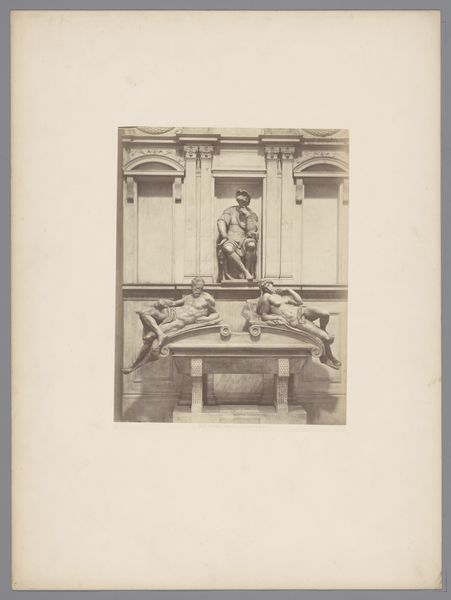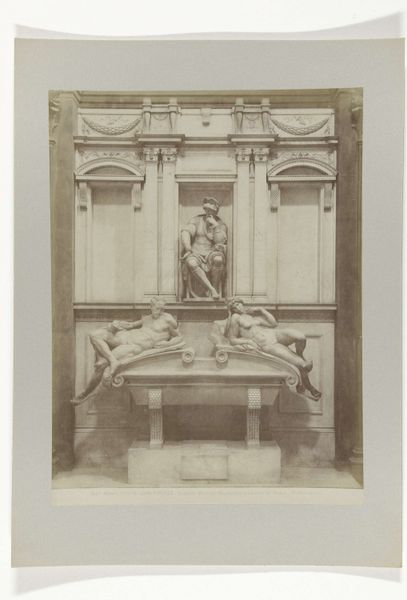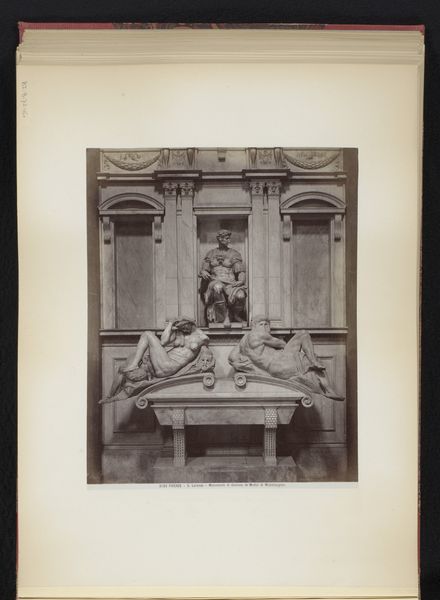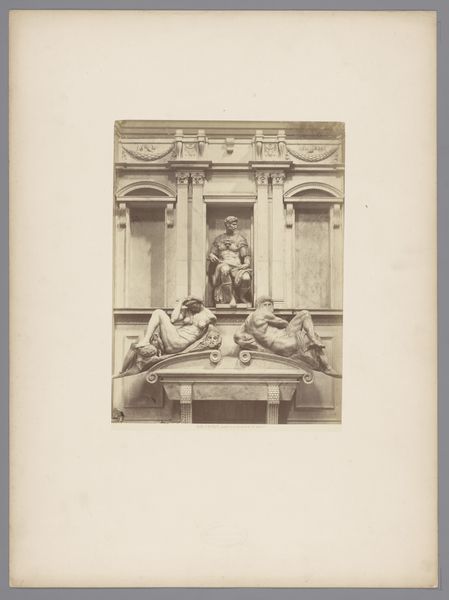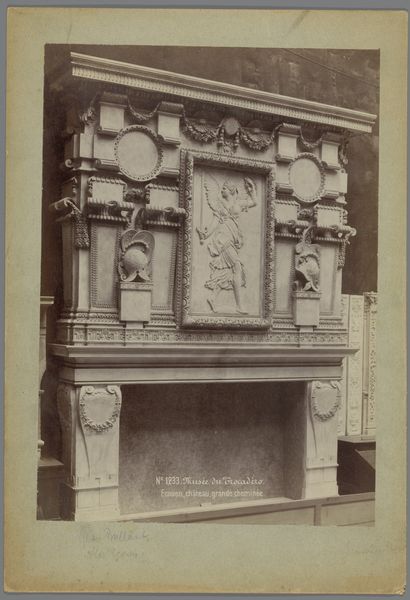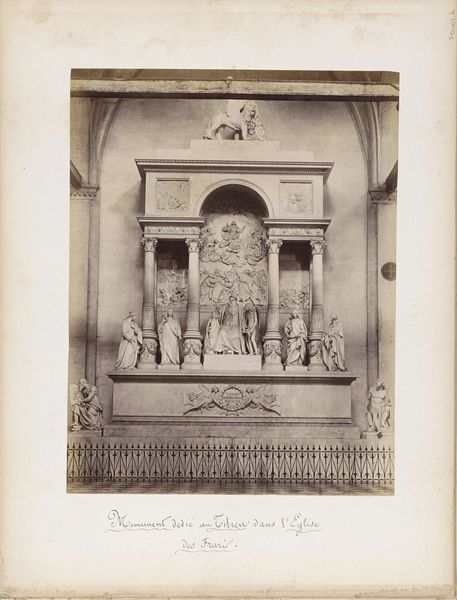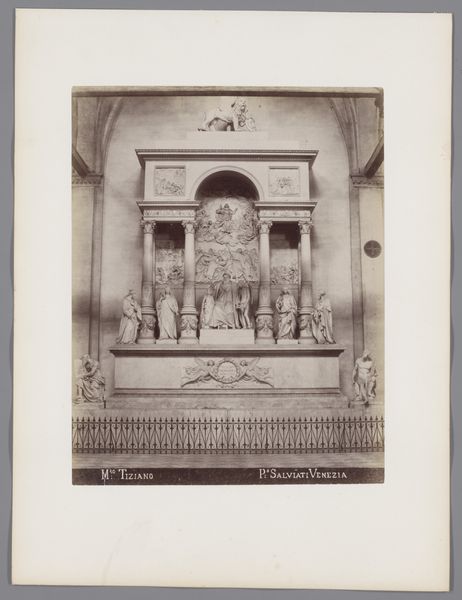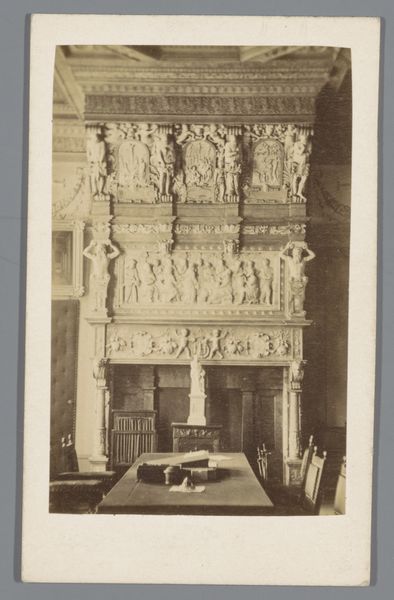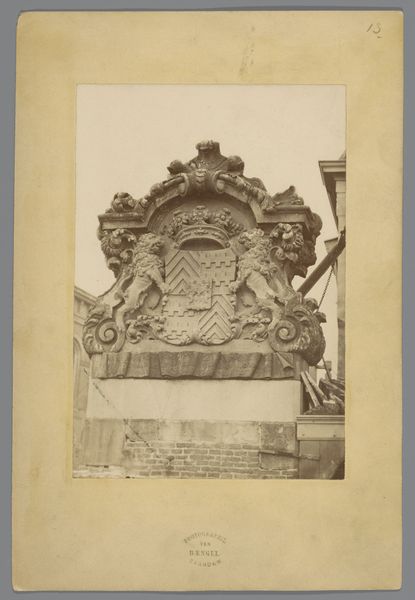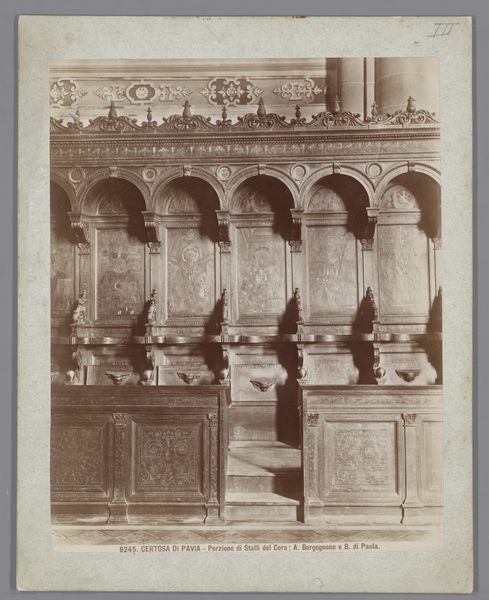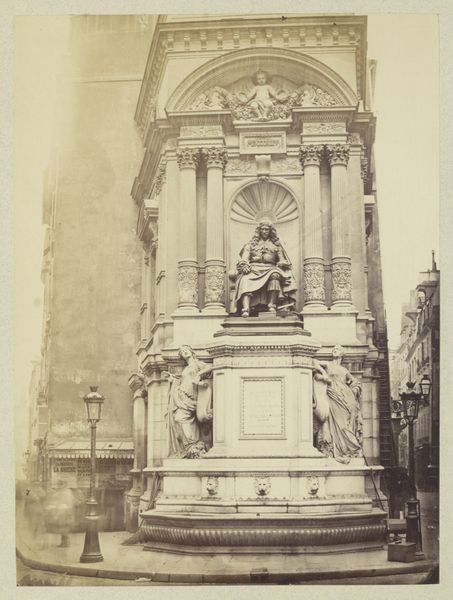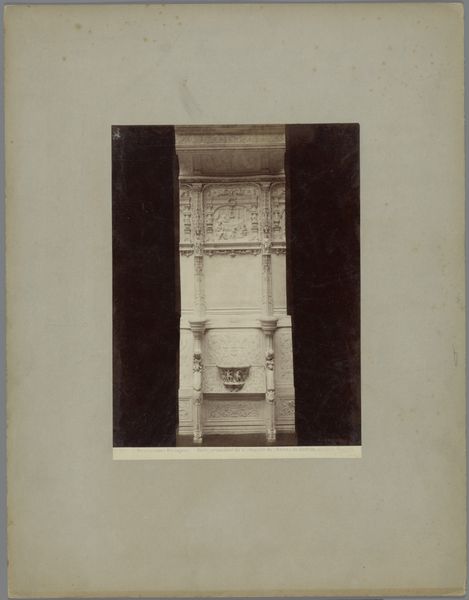
Medicikapel in de Sagrestia Nuova, Sint-Laurensbasiliek, Florence 1855 - 1885
0:00
0:00
anonymous
Rijksmuseum
print, photography, sculpture, gelatin-silver-print, marble
#
portrait
# print
#
figuration
#
11_renaissance
#
photography
#
sculpture
#
gelatin-silver-print
#
cityscape
#
history-painting
#
academic-art
#
marble
#
italian-renaissance
Dimensions: height 102 mm, width 63 mm
Copyright: Rijks Museum: Open Domain
Curator: This gelatin silver print captures the Medicikapel in the Sagrestia Nuova, part of the Basilica di San Lorenzo in Florence. It was produced sometime between 1855 and 1885. The anonymous photographer beautifully renders the interplay of light and shadow on the marble sculptures. Editor: My initial reaction is that the print exudes a powerful stillness, almost a reverential hush. The light and shadow create an intriguing dichotomy between revelation and concealment, and it emphasizes the density and scale of the chapel’s sculptural elements. Curator: Indeed, photography in this era played a vital role in disseminating knowledge about Renaissance art and architecture. Consider the socio-political implications of sharing these iconic images, essentially democratizing access to spaces that were once the exclusive domain of the elite. Editor: And yet, the photographic medium also transforms the viewer’s relationship with the chapel. The black and white rendering abstracts it, flattening the spatial and sensory experience. This photograph is not a neutral record. Instead, it reflects a nineteenth-century gaze on the Italian Renaissance, colored by its own aesthetics, its colonial structures. The choice to highlight specific sculptural details suggests a particular interpretation of this historical narrative, perhaps sanitizing and elegizing that reality. Curator: I agree. The photographer chooses a specific perspective, manipulating our viewpoint. Consider how that selective framing impacts our interpretation of the Medici’s patronage and power – a family that held immense sway over Florence during the Renaissance. Their legacy, so powerfully displayed here, deserves deeper interrogation. Editor: Right. It invites us to think critically about how historical narratives are shaped through imagery. This is a glimpse of how photography plays an important role in forming our understanding of art and historical structures. Curator: Precisely, how we create an image, how we disseminate, and how it influences society is key. Editor: Looking at this again I think it urges one to delve further into the complex interaction of art, identity and power within Renaissance Italy and today.
Comments
No comments
Be the first to comment and join the conversation on the ultimate creative platform.
